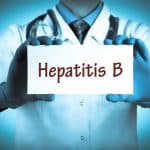Viramidine Causes Less Anemia
Viramidine Demonstrates Anti-HCV Genotype 1 Activity That Compares Favorably to Ribavirin, But without Complications of Severe Anemia
Dose-limiting anemia can be a prominent adverse event of therapy with pegylated interferon and ribavirin. This dose-ranging study examined whether viramidine, a liver-targeting prodrug of ribavirin, may be a safer alternative when used in combination with pegylated interferon alfa-2a/ PEG-IFN (Pegasys).
Of 180 HCV therapy-naive patients enrolled in the study, 171 patients received full-dose viramidine (400 mg: n = 47; 600 mg: n = 43; 800 mg: n = 44) versus ribavirin 1000-1200 mg/d (n = 37) in combination with PEG-IFN 180 µg/wk SC.
Patients were predominantly male (64%), Caucasian (76%), and genotype 1 (72%), with a median HCV RNA of 6.5 log10 copies/mL. Analyses assessed the incidence of anemia (hemoglobin)
Results
Among patients with no dose modification due to anemia at end of treatment (EOT), no significant differences were noted between viramidine (400, 600, and 800 mg BID) versus ribavirin in the proportion of patients with undetectable HCV RNA levels (55%, 63%, 55%, and 62%, respectively).
Rates of anemia at EOT for the viramidine 400, 600, and 800 mg groups were 0%, 2%, and 11%, respectively, versus 27% for the ribavirin arm.
Based on evaluable patients at EOT experiencing a decline in hemoglobin of at least 25%, the rate in the ribavirin group (48%) was higher versus the rate in the viramidine groups (400 mg: 14%; 600 mg: 18%; 800 mg: 15%).
Other types of adverse events were similar between treatment arms.
Conclusions
In conclusion, the authors note that at EOT in this Phase 2 study, “Viramidine demonstrated antiviral activity comparable to that of ribavirin when used in combination with pegylated interferon alfa-2a among patients with no dose modification due to anemia.”
“Patients in the viramidine arms also showed a significantly lower incidence of anemia.”
“Data lock for the Phase 2 study will occur by December 1, 2004, and sustained virologic response rates and safety outcomes will be presented at the 2005 EASL meeting.”
California Pacific Medical Center, San Francisco CA, USA, University of Florida, Gainesville FL, USA, University of New Mexico, Albuquerque NM, USA, University of North Carolina, Chapel Hill NC, USA, Hospital of the University of Pennsylvania, Philadelphia PA, USA, Valeant Pharmaceuticals International, Costa Mesa CA, USA.
04/15/05
Reference
R G Gish and others. VIROLOGIC RESPONSE AND SAFETY OUTCOMES IN THERAPY-NAIVE PATIENTS TREATED FOR CHRONIC HEPATITIS C WITH VIRAMIDINE IN COMBINATION WITH PEGYLATED INTERFERON ALFA-2A. Abstract 91. 40th EASL. April 13-17, 2005. Paris, France.







